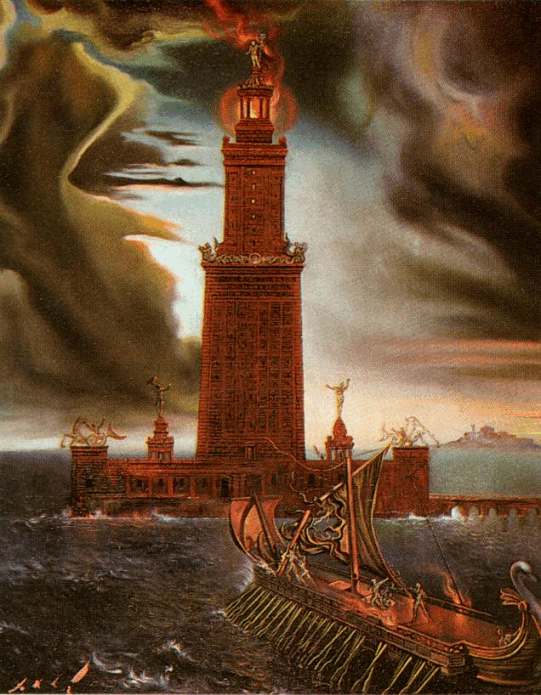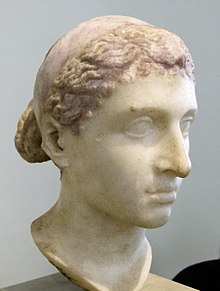
by fljustice | May 11, 2011 | Essays/Research, History, Hypatia
Alexandria: The Early Years
 Alexandria has always fired my imagination. It’s the setting for my novel Selene of Alexandria. I’ve written about its Great Library and Cleopatra’s Needle, an obelisk from the Caesarian that sits in New York’s Central Park. Alexandria is fascinating and complicated, with a reputation for learning and a history of violence. It was in the news as Muslims attacked Christians, harking back to the bad old days of the fourth and fifth centuries. The next month, young people of all faiths formed a human chain around its museums and library, protecting those vulnerable institutions during the Egyptian uprising. In ancient times, as today, it was a major port and the gateway to the rest of Egypt. A diverse city of many religions, where people from all over the world come to work, trade, study and enjoy the culture. You could think of it as the Manhattan of the East, but maybe Manhattan should be known as the Alexandria of the West. After all, Alexandria did come first. (more…)
Alexandria has always fired my imagination. It’s the setting for my novel Selene of Alexandria. I’ve written about its Great Library and Cleopatra’s Needle, an obelisk from the Caesarian that sits in New York’s Central Park. Alexandria is fascinating and complicated, with a reputation for learning and a history of violence. It was in the news as Muslims attacked Christians, harking back to the bad old days of the fourth and fifth centuries. The next month, young people of all faiths formed a human chain around its museums and library, protecting those vulnerable institutions during the Egyptian uprising. In ancient times, as today, it was a major port and the gateway to the rest of Egypt. A diverse city of many religions, where people from all over the world come to work, trade, study and enjoy the culture. You could think of it as the Manhattan of the East, but maybe Manhattan should be known as the Alexandria of the West. After all, Alexandria did come first. (more…)

by fljustice | Apr 30, 2011 | Books, Fiction, Reviews
“Anthony and Cleopatra” by Colleen McCullough
I’m on a bit of a Cleopatra kick. Last week I reviewed the biography Cleopatra: A Life by Stacy Schiff. This week it’s a novel by Colleen McCullough. From the book jacket:
 “Caesar is dead, and Rome is, again, divided. Lepidus has retreated to Africa, while Antony rules the opulent East, and Octavian claims the West, the heart of Rome, as his domain. Though this tense truce holds civil war at bay, Rome seems ripe for an emperor—a true Julian heir to lay claim to Caesar’s legacy. With the bearing of a hero, and the riches of the East at his disposal, Antony seems poised to take the prize. Like a true warrior-king, he is a seasoned general whose lust for power burns alongside a passion for women, feasts, and Chian wine. His rival Octavian, seems a less convincing candidate: the slight golden haired boy is as controlled as Antony is indulgent and as cool-headed and clear-eyed as Antony is impulsive. Indeed, the two are well- matched only in ambition.”
“Caesar is dead, and Rome is, again, divided. Lepidus has retreated to Africa, while Antony rules the opulent East, and Octavian claims the West, the heart of Rome, as his domain. Though this tense truce holds civil war at bay, Rome seems ripe for an emperor—a true Julian heir to lay claim to Caesar’s legacy. With the bearing of a hero, and the riches of the East at his disposal, Antony seems poised to take the prize. Like a true warrior-king, he is a seasoned general whose lust for power burns alongside a passion for women, feasts, and Chian wine. His rival Octavian, seems a less convincing candidate: the slight golden haired boy is as controlled as Antony is indulgent and as cool-headed and clear-eyed as Antony is impulsive. Indeed, the two are well- matched only in ambition.”
The Masters of Rome
Anthony and Cleopatra is the last of seven novels, collectively called the Masters of Rome series, covering the end of the Roman Republic in all its twisted glory. The result of this herculean task, is a legacy of some of the best researched historical fiction of this time; meticulously covering politics, battles, people, religious rites, traditions, trade, architecture, etc. The best books of the series draw the reader in with fascinating characters, Machiavellian plots, and scintillating detail. The worst give the reader the sense of reading an entertaining history book. Which is not, necessarily, a bad thing. McCullough had intended to end the saga with The October Horse, but avid fans prevailed and she concluded with this novel, which shows the final end of the Republic and beginning of Empire. (more…)

by fljustice | Apr 26, 2011 | Biographies, Books, Reviews, Wonderful Women
“Cleopatra: A Life” by Stacy Schiff
 I have a soft spot for strong women in history. I’ve written about Hypatia, the Lady Philosopher of Alexandria; Empress Galla Placidia and her niece Pulcheria who both ruled Rome in its waning days. I’ve read about Boudica, Queen of the Iceni; Amanirenas, the one-eyed warrior queen of Kush; and Zenobia, Queen of Palmyra; all of whom defeated Roman armies, only to succumb later to that massive military machine. Most of my favorites are little known women who ruled countries, commanded armies and navies, dealt astutely with ruling male neighbors and made a difference in their people’s lives. I like to read and write about them because they are little known. I like introducing readers to new characters and broadening the scope of history. Occasionally, I’ll run across a woman I thought I knew, and find out I’m wrong. Cleopatra is one. (more…)
I have a soft spot for strong women in history. I’ve written about Hypatia, the Lady Philosopher of Alexandria; Empress Galla Placidia and her niece Pulcheria who both ruled Rome in its waning days. I’ve read about Boudica, Queen of the Iceni; Amanirenas, the one-eyed warrior queen of Kush; and Zenobia, Queen of Palmyra; all of whom defeated Roman armies, only to succumb later to that massive military machine. Most of my favorites are little known women who ruled countries, commanded armies and navies, dealt astutely with ruling male neighbors and made a difference in their people’s lives. I like to read and write about them because they are little known. I like introducing readers to new characters and broadening the scope of history. Occasionally, I’ll run across a woman I thought I knew, and find out I’m wrong. Cleopatra is one. (more…)

by Faith Justice | Jul 18, 2010 | History, History in the News
History in the News:
Bones, Poison, and Treasure

Bust of Cleopatra VII in Berlin
I’ll be doing a regular round up of archaeology and history stories that make it into the mainstream press every couple of weeks with links to the original stories. The focus will be on Roman history, but anything that catches my fancy will be fair game. This post features several finds in Britain including a hoard of coins, a controversial skeleton initially thought to be a female gladiator, and the graves of 97 infants; Roman frescoes, canals and looted artifacts; and renewed speculation over Cleopatra’s death. Snakebite or poison?
I don’t know if it’s because the stories are printed in English, Britain has an abundance of archaeologists and amateur treasure hunters, or some other fluke of randomness, but fully half the stories that caught my attention this round up are from Britain. We’ll start with the bones and end with the treasure.
In Caistor (from the Anglo-Saxon ceaster meaning Roman camp or town), archaeologists have discovered a large, well-organized late Roman cemetery. They’ve recovered 46 sets of human remains from the site of the derelict Talbot Inn which is being redeveloped into a Lincolnshire cooperative food store. The remains – including complete skeletons – will be studied and reburied. Colin Palmer-Brown, Director of the Pre-Construction Archaeological Services Ltd team overseeing the site believes there are “hundreds if not thousands of people buried in this part of Caistor.”
(more…)

 Alexandria has always fired my imagination. It’s the setting for my novel Selene of Alexandria. I’ve written about its Great Library and Cleopatra’s Needle, an obelisk from the Caesarian that sits in New York’s Central Park. Alexandria is fascinating and complicated, with a reputation for learning and a history of violence. It was in the news as Muslims attacked Christians, harking back to the bad old days of the fourth and fifth centuries. The next month, young people of all faiths formed a human chain around its museums and library, protecting those vulnerable institutions during the Egyptian uprising. In ancient times, as today, it was a major port and the gateway to the rest of Egypt. A diverse city of many religions, where people from all over the world come to work, trade, study and enjoy the culture. You could think of it as the Manhattan of the East, but maybe Manhattan should be known as the Alexandria of the West. After all, Alexandria did come first. (more…)
Alexandria has always fired my imagination. It’s the setting for my novel Selene of Alexandria. I’ve written about its Great Library and Cleopatra’s Needle, an obelisk from the Caesarian that sits in New York’s Central Park. Alexandria is fascinating and complicated, with a reputation for learning and a history of violence. It was in the news as Muslims attacked Christians, harking back to the bad old days of the fourth and fifth centuries. The next month, young people of all faiths formed a human chain around its museums and library, protecting those vulnerable institutions during the Egyptian uprising. In ancient times, as today, it was a major port and the gateway to the rest of Egypt. A diverse city of many religions, where people from all over the world come to work, trade, study and enjoy the culture. You could think of it as the Manhattan of the East, but maybe Manhattan should be known as the Alexandria of the West. After all, Alexandria did come first. (more…)

